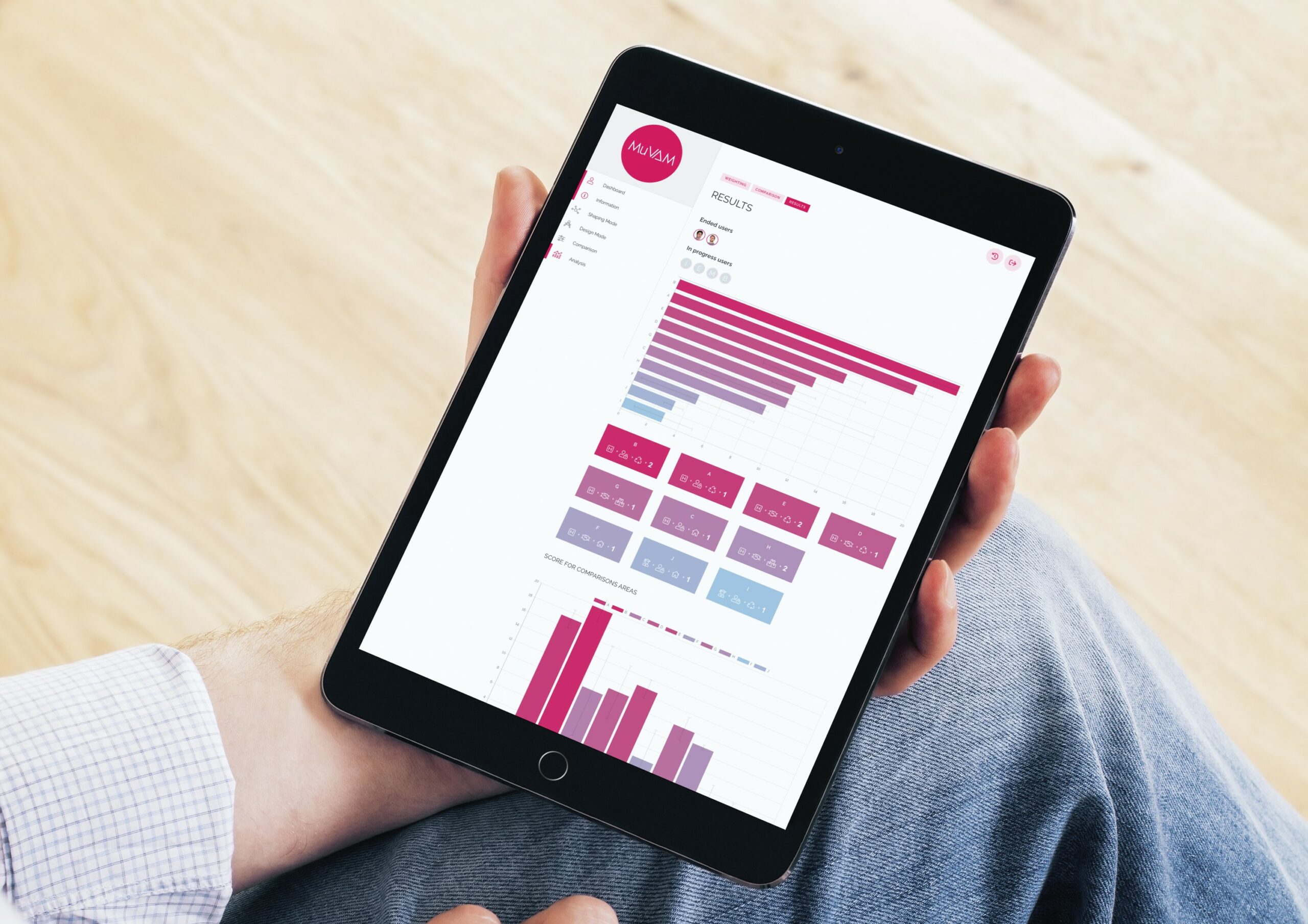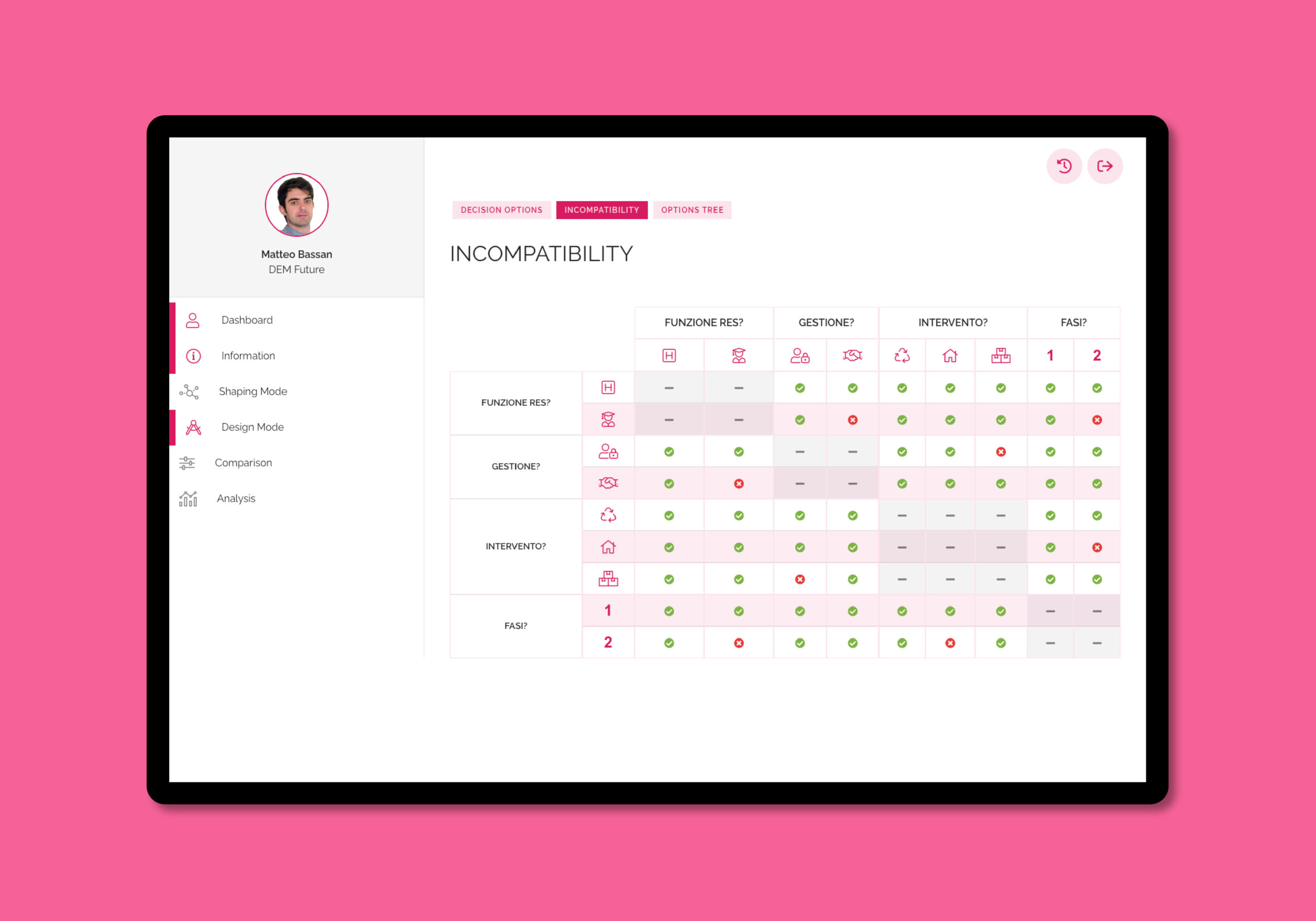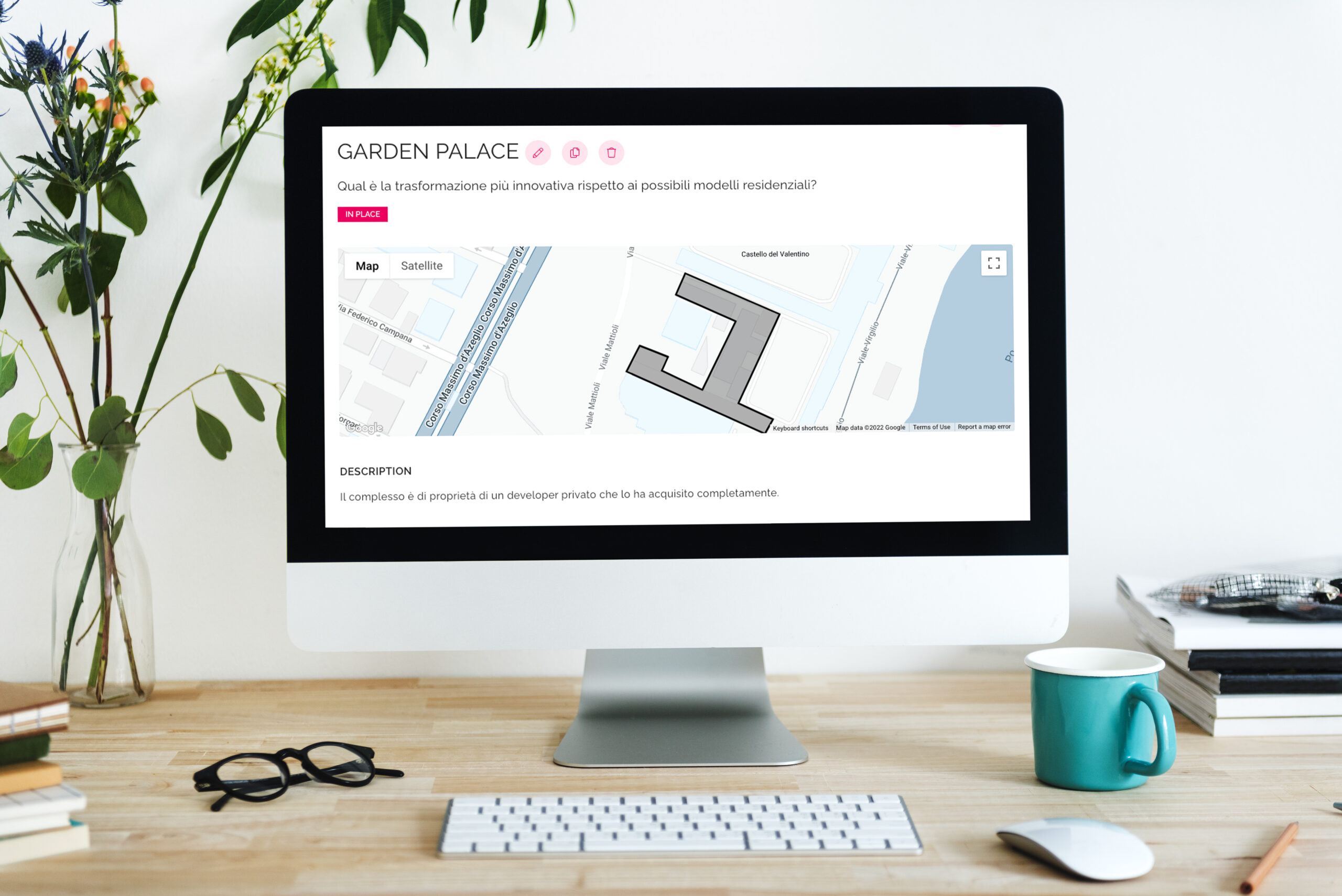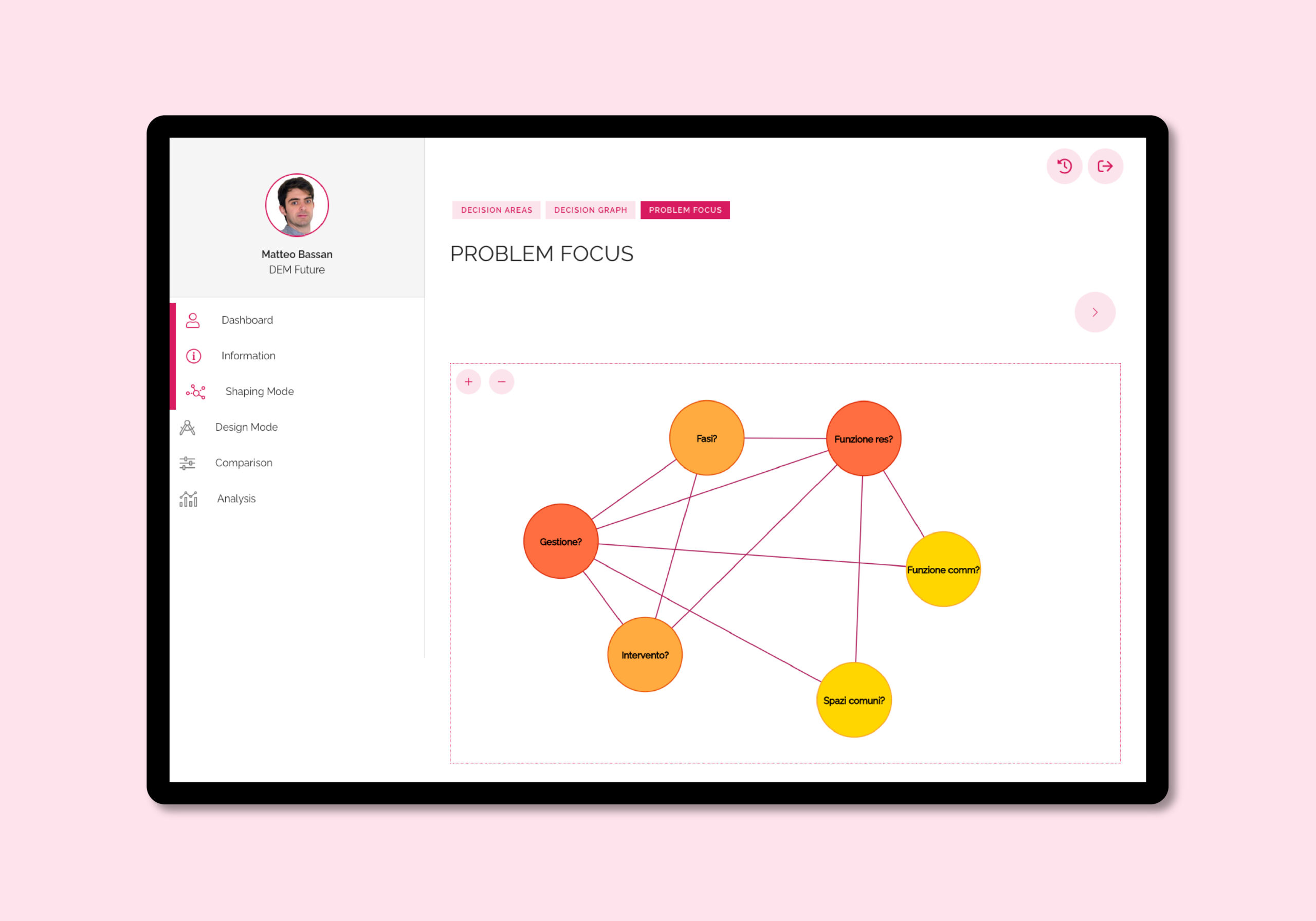A software to digitize an academic method
Making decisions, as we know, is often difficult. It is even more challenging when these decisions involve complex projects that include numerous people in different roles.
One method that has attempted to simplify the decision-making process is the SCA (Strategic Choice Approach). It is from this academically theorized only criterion that we started the design and development of our MuVAM software.
The challenge we undertook with Professor Lami from the Polytechnic University of Turin was to digitize this approach. We succeeded by providing software that, originally designed to facilitate decision-making processes in the architectural/urban planning field, is suitable for use in many other different sectors.

Preliminary Phase: Preparing the Field
A good decision-making process requires adequate preparation of the “field of action.” With MuVAM, the first step is to invite the people who will be involved in the process—including those who will not actively participate in the decision but are interested in being part of it as observers. Additionally, an area can be drawn on a map if the decisions pertain to urban or extra-urban areas.
First Phase: Decision Areas
After the preparation is complete, the moderator can use MuVAM to create “decision areas,” which are fields where opinions need to be expressed. In the simple case of defining a menu for a hypothetical neighborhood dinner, these areas could be “appetizer,” “first course,” “main course,” “side dish,” and so on.
The people involved will then need to indicate the areas where decisions should be made, with the option to add comments to justify their choices. This phase is very important because everyone can express their opinion on what is truly important to choose and/or discuss.
Second Phase: Priorities and Relationships
After the moderator has confirmed the various decision areas, all involved parties can determine the importance of the different fields and the potential relationships between decision areas, based on their experience and specific roles in the project.
Once everyone has confirmed their choices, the software arranges the areas according to their importance and the respective relationships (determined mathematically: if 2 out of 3 participants indicated the same relationship, it is added). An example of a relationship? For a dinner, the main course and side dish are paired, while the side dish is not related to the first courses.

Project Steps
01
02
03
04
February 2019
Digitizing the methodology
Professor Lami, from The Polytechnic University of Turin requested us to digitize the Strategic Choice Approach, a simplified decision-making process.
March 2019
How to simplify process phases
We studied extensively with professors and researchers from the Polytechnic University to understand all the distinct phases of this process. Our goal was to simplify them, making them suitable for representation in software.
September 2019
The software simplifying decision-making processes
We released MuVAM, the software that simplifies complex decision-making processes, handling everything from the preliminary phase to decision areas, priorities, relationships, and the final judgment, all accessible remotely.
October 2021
A new release of MuVAM
The success of the first version led us to develop a more efficient algorithm for decision evaluation and introduce functional improvements, including a fully asynchronous usage mode, resulting in MuVAM version 2.0.
Third Phase: Details to Choose From
After identifying the decision areas, their importance, and possible relationships, MuVAM allows all participants to define options for each area. Each option can be associated with an icon to facilitate visual association during the final choice.
When defining options, each must be “validated” by the participants, who can also establish incompatibilities between options. The software excludes some combinations from the final vote. Just like determining the importance of decision areas, the experience and roles of each participant play a crucial role in defining these incompatibilities, resulting in a series of combinations generated by the software.

The Main Technologies Used:
Node.js
Vue
MongoDB
AWS
Apexcharts
Fourth Phase: Comparison Areas and Final Judgment
A “criterion” for selection is then established for these combinations, defined by the so-called comparison areas. Using the dinner example, some comparison areas could be “menu cost,” “total calories,” “ease of preparation,” and so on.
So, we arrive at the phase for which MuVAM was actually developed: the evaluation! To do this, the software provides users with a bar to establish a judgment through an index for each comparison area, for all combinations.
MuVAM then generates a visual summary, using bars to show how closely each solution meets certain criteria compared to others, and, in general, which is the “best”.
Will this be the solution actually chosen by the group? Not necessarily: MuVAM doesn’t choose but helps to choose in an objective and easily manageable way. Imagine the potential of this software when an entire neighborhood of thousands of residents needs to express their opinion on an important urban planning operation!
